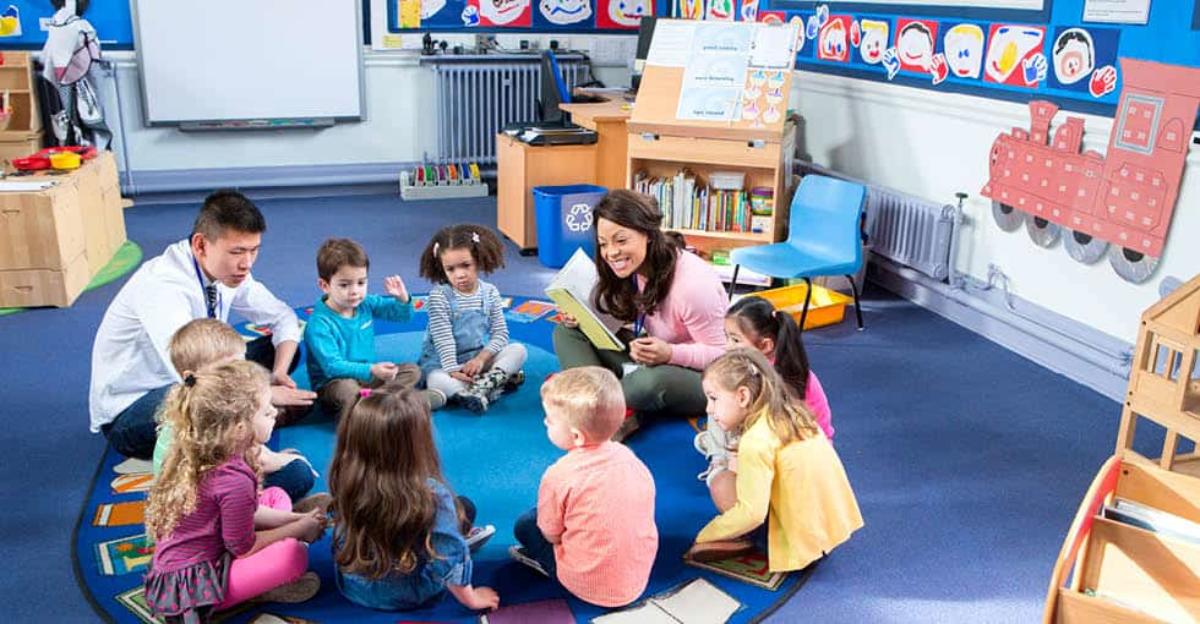Circle time is a cherished tradition in the early childhood classroom. Done right, circle time allows for valuable learning and community-building opportunities. Keeping the attention of a group of three- to five-year-olds during group or circle time is quite a task. But, with a bit of planning and smart redirection this time is well spent.
Keep Each Part of Circle Time Brief
Circle time often contains multiple components like greeting, sharing, song, class discussion, or curriculum content. Keeping each component brief will help hold your young students’ attention until circle time is over. Structuring the time wisely will help you keep circle time brief. For example, split the class into groups so that each child has one day per week to share during circle time. This allows each child to have a chance in the spotlight while keeping sharing time to a minimum.
Make Marked Transitions Between Components
Ordering circle time thoughtfully can help young children to stay focused. For example, alternate quiet listening activities like share time or calendar time with more active and interactive activities like songs and games. This helps children stay engaged and breaks up passive listening activities into manageable chunks.
Make Things As Interactive As Possible
Integrate physical responses from young children whenever possible. For example, if a one four year old has just shared that he got a new puppy over the weekend, ask your class to put their hands on their heads to indicate they prefer puppies, or on their knees to show they prefer kittens. This allows each child to feel involved in the discussion and integrates physical movement in a way that does not slow down the flow of circle time.
Practice, Practice, Practice
Reinforce what is expected during circle time. Where should the children’s hands be? How and where should they sit? What does respectful listening look like? Have your preschoolers or kindergarten students practice these behaviors and then give redirections and reminders as needed until all of the children follow the routines of circle time automatically.
Start Simple
Begin the year with only two or three circle time components and add more gradually as the year progresses. Children in an early childhood classroom change and grow throughout the course of the school year, and their attention spans grow as well. Children who can only focus for a four-minute circle time in the fall may be able to focus for eight or ten minutes by the spring. Keeping your expectations simple at the beginning of the year can help children feel successful. Adding new components throughout the year can also help circle time stay fresh and fun.
Change It Up
While routine is good for young children, making occasional changes to circle time can keep the experience fresh and exciting. Teach a new song or switch out an old component to grab interest.
Have Tricks Up Your Sleeve
Some days your young students will have a harder time focusing than other days. When children get distracted, help them quickly refocus by initiating a sound from a rhythm set or a clapping pattern. Lead a thirty-second game of Simon Says, do three jumping jacks, or march in place. Keeping an eye on their behavior and body language can help you assess when they need a quick minute to regroup.






[…] 出典:School Yard […]